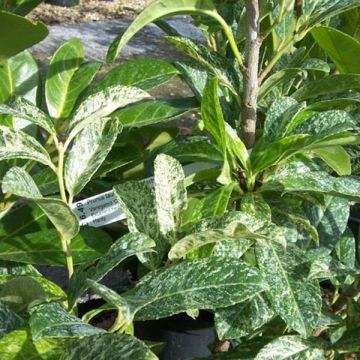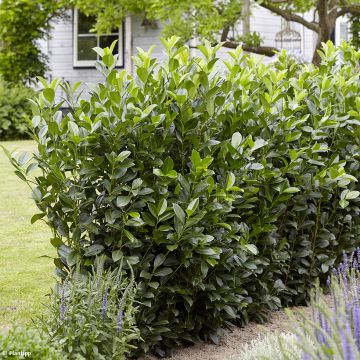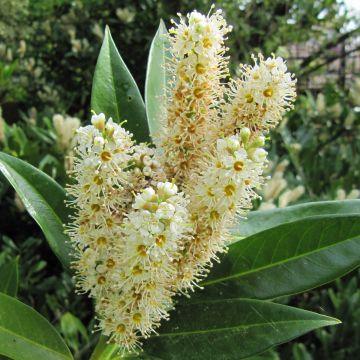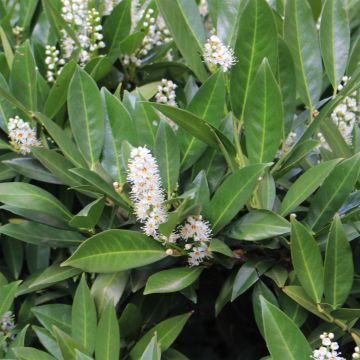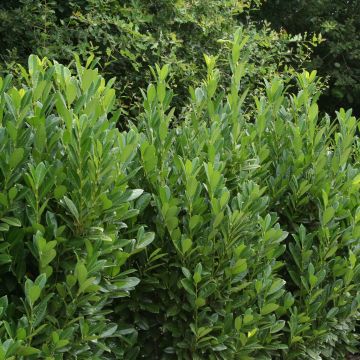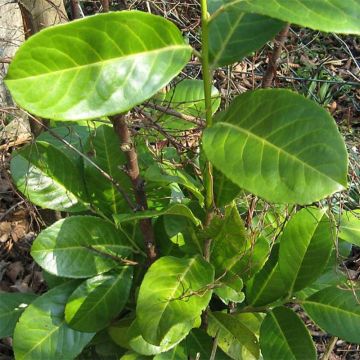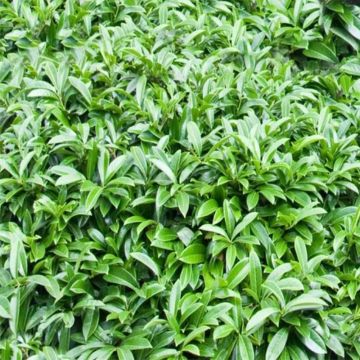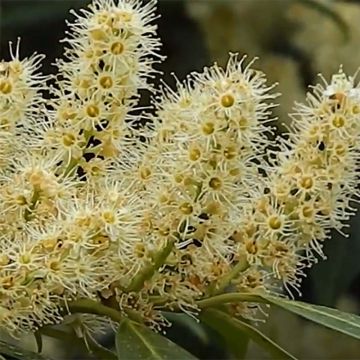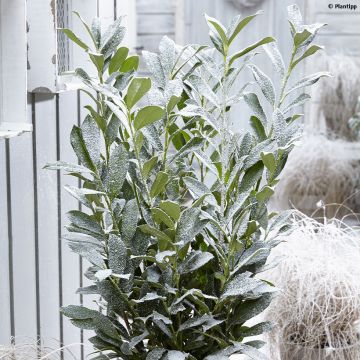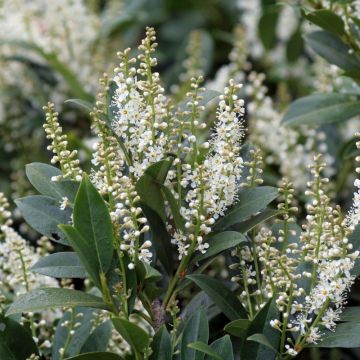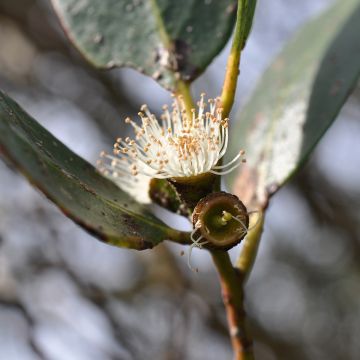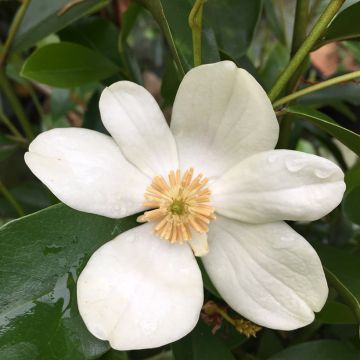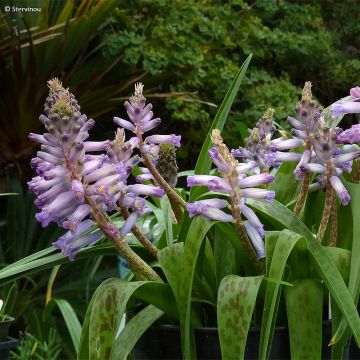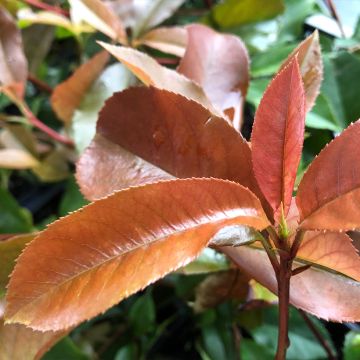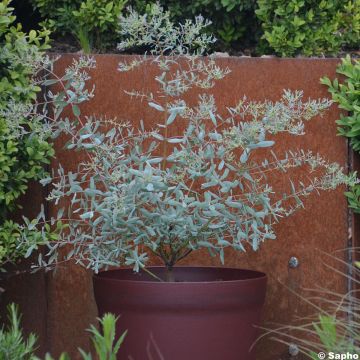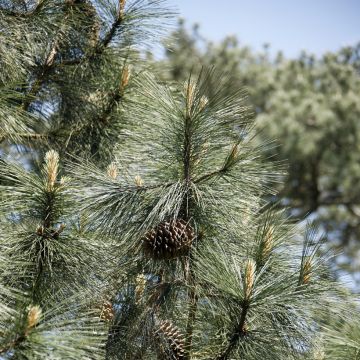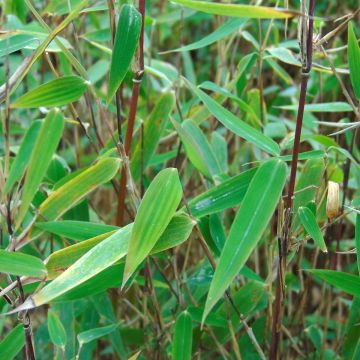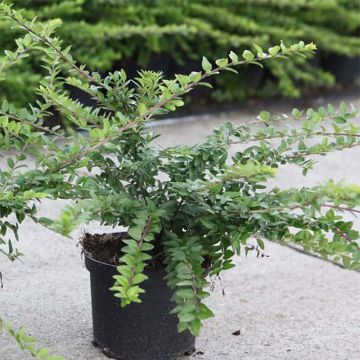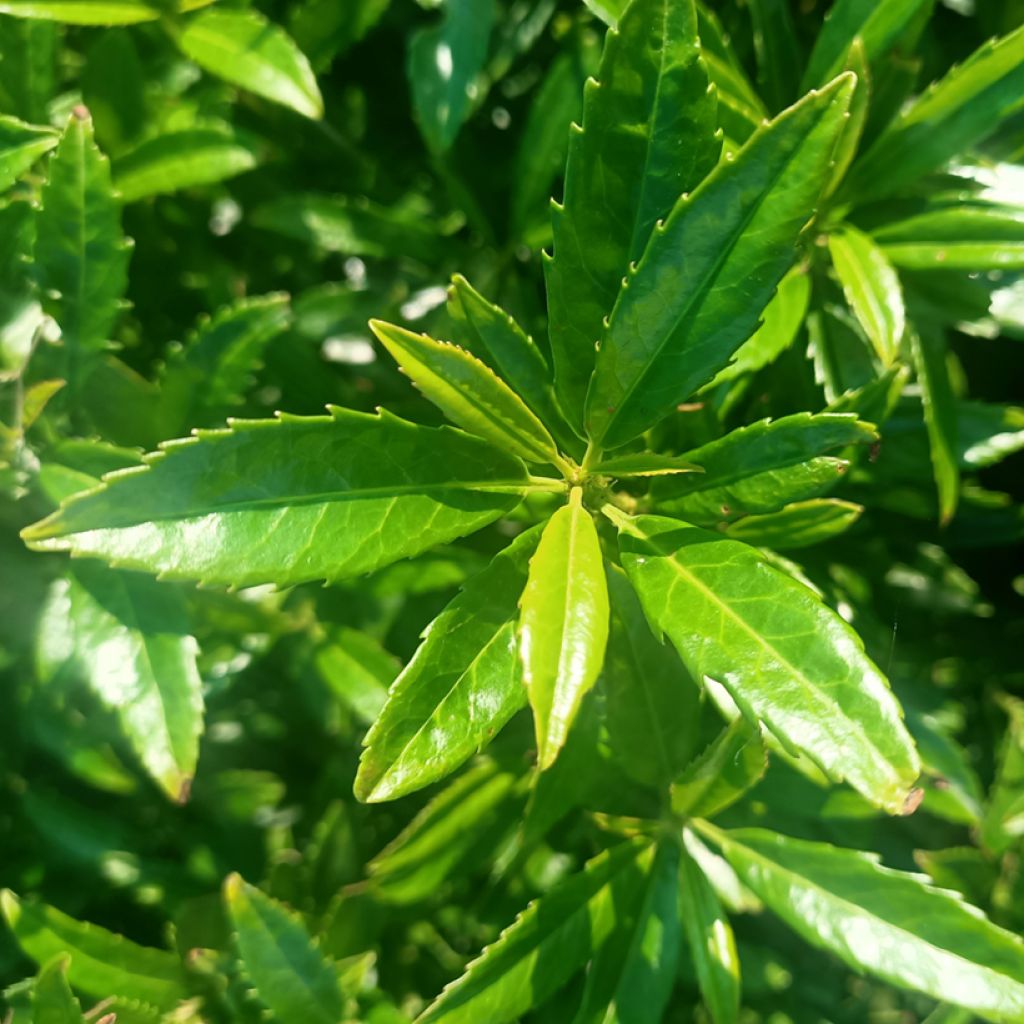

Prunus laurocerasus SOFIA - Cherry Laurel
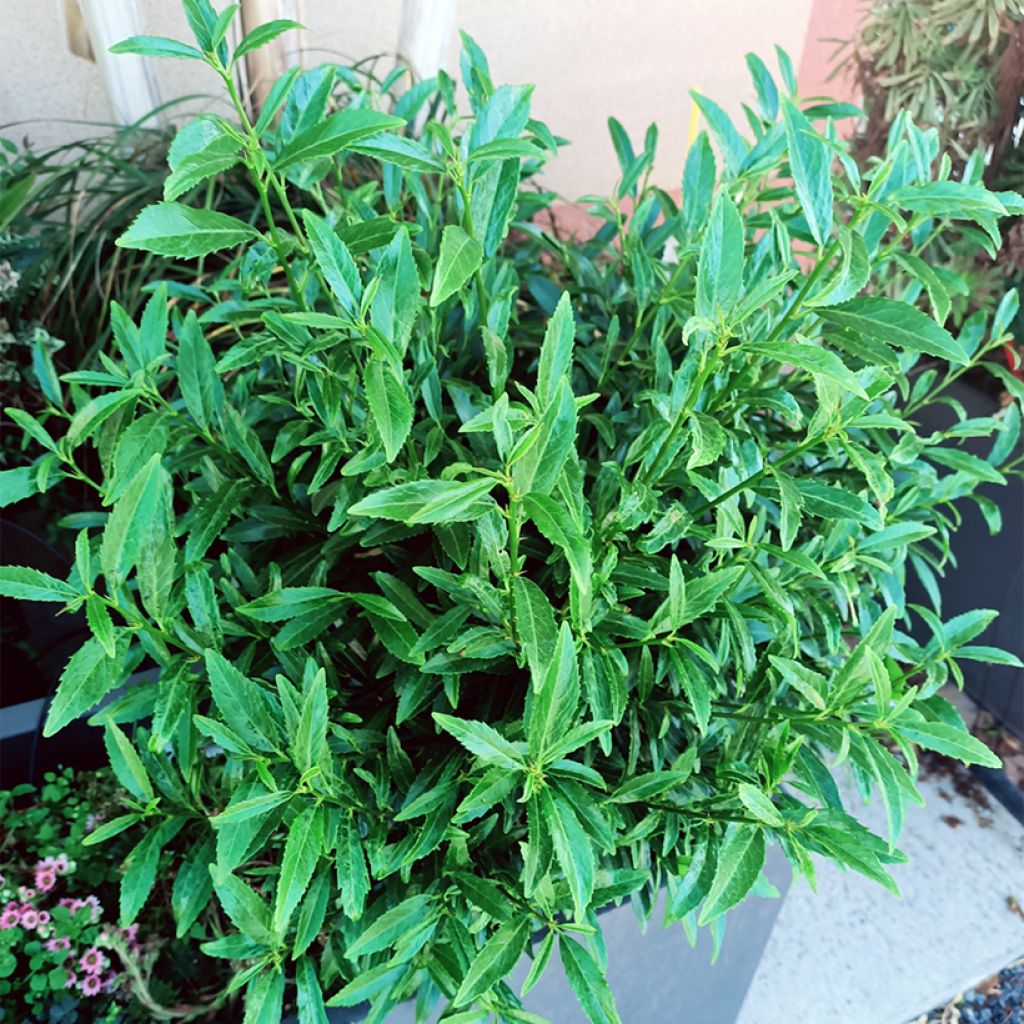

Prunus laurocerasus SOFIA - Cherry Laurel
Prunus laurocerasus SOFIA - Cherry Laurel
Prunus laurocerasus 'Zsofi' SOFIA®
Cherry Laurel, Common Laurel, English Laurel
This item cannot be shipped to the selected country
Delivery charge from €6.90
More information
Delivery charge from €6.90
More information
Schedule delivery date,
and select date in basket
This plant carries a 24 months recovery warranty
More information
We guarantee the quality of our plants for a full growing cycle, and will replace at our expense any plant that fails to recover under normal climatic and planting conditions.
From €7.90 for pickup delivery and €6.90 for home delivery
Express home delivery from €8.90.
Does this plant fit my garden?
Set up your Plantfit profile →
Description
Prunus laurocerasus 'Sofia' is a recent variety of Cherry Laurel that pleasantly renews the genre and will appeal to a new audience, not fond of the large leaves and voluminous habit of certain classic varieties. This bush is distinguished by a naturally compact and dense habit, making it easy to shape through pruning or to use as a low hedge. Its evergreen foliage is narrow and highly toothed, providing original and decorative interest throughout the year. When left unpruned, it produces cream-white flowers in spring. Easy to grow in most situations, it is also highly resistant to extreme temperatures, both cold and hot.
Cherry Laurel, sometimes called the Trébizonde laurel, almond laurel or palm laurel, is an evergreen bush from the Rosaceae family. Prunus is one of the genera with the most species, around 300, many of which are fruit-bearing (Cherry, Plum, Apricot...) or ornamental. Native to southeastern Europe and Asia Minor, indigenous to Iran, the Caucasus, and Turkey, Prunus laurocerasus is an evergreen bush that can reach a large size (up to 8m tall) and even form true trunks.
'Sofia' Palm Laurel is a horticultural variety that looks quite different, selected by Hungarian breeder Gabor Peter Nemeth. Originating from central Europe with a continental climate, it has great hardiness (down to -24°C) as well as resistance to high temperatures, up to 40°C. These characteristics allow it to be planted without fear in regions with marked temperature variations.
'Sofia' stands out with its very compact and dense habit, measuring approximately 1.50m in height and 1.20m or more in width. This makes it suitable for planting in containers to decorate a terrace or patio, or for pruning into topiary shapes such as balls or cones, or any other form to create an effect in the garden. Another unique feature of this variety is its foliage, which looks very different from other Cherry Laurels. In Sofia, the leaves are elongated and truly narrow, with a distinctly toothed edge, to the point that novices may have difficulty recognizing it as a Cherry Laurel. Evergreen and a beautiful shiny dark green, the leaves are ornamental throughout the year.
If left unpruned, it will produce cream-white flowers in April and then small black fruits, toxic to humans (in reality, it is mainly the seed that is highly toxic) but consumed by birds. However, the interest of this variety lies in its ability to be pruned into an aesthetic shape. It can also be used to create a low hedge separating two areas of the garden.
The 'Sofia' Cherry Laurel is very unique and will appeal to gardeners who are tired of the Cherry Laurels that were overused in the 80s, as its appearance differs radically from the classic varieties of the past. This small bush has real ornamental value that allows it to be used outside of hedges, in combination with other plants, in a mixed border, or in a bed with topiaries. Plant alongside it a crenate Holly such as Ilex crenata 'Convexa', pruned into a ball shape. Among conifers, many offer interesting patterns and different colours from green. For example, Taxus baccata 'David' is a Yew with young foliage that turns golden and has a columnar habit, creating interesting effects. To diversify both shapes and colors, consider incorporating a Juniperus squamata 'Blue Star', a small Juniper with blue-silver foliage that forms a spreading cushion. By varying colours and horizontal, vertical, spherical, or weeping forms, you will create an attractive scene that stands out.
Attention: The leaves and all parts of the Cherry Laurel are toxic if ingested, except for the pulp of the fruit (the seed is toxic). They contain prussic acid (hydrocyanic acid), associated with an aromatic substance called benzaldehyde, which has the scent of bitter almonds. This principle is also found in the almonds of apricot and peach pits, for example.
Plant habit
Flowering
Foliage
Safety measures
Botanical data
Prunus
laurocerasus
'Zsofi' SOFIA®
Rosaceae
Cherry Laurel, Common Laurel, English Laurel
Cultivar or hybrid
ingestion
Cette plante est toxique si elle est ingérée volontairement ou involontairement.
Ne la plantez pas là où de jeunes enfants peuvent évoluer, et lavez-vous les mains après l'avoir manipulée.
Pensez à conserver l'étiquette de la plante, à la photographier ou à noter son nom, afin de faciliter le travail des professionnels de santé.
Davantage d'informations sur https://plantes-risque.info
Other Cherry Laurel - Commun Laurel
View all →Planting and care
Prunus laurocerasus 'Sofia', is very accommodating and very easy to grow and is satisfied with an ordinary, well-prepared soil, without too much limestone, moderately dry to slightly moist. It tolerates all exposures, from sun to shade, and withstands low temperatures well (around -24°C), as well as heat (up to 40°C). Planting is preferably done in autumn, to benefit from winter precipitation or in early spring. Dig a hole 50cm in all directions and add a little planting compost by mixing it with the existing soil. Soak the root ball in a bucket of water for fifteen minutes before placing it in the planting hole. Fill in and water abundantly.
Water regularly for the first two years to facilitate rooting, then only during hot periods.
Note: The decomposition of laurel-palm leaves, which is very slow, releases substances in the litter layer that inhibit the germination and growth of other plants. It would therefore be preferable to dispose of pruning waste at a waste disposal site and not compost it.
Planting period
Intended location
Care
This item has not been reviewed yet - be the first to leave a review about it.
Similar products
Haven't found what you were looking for?
Hardiness is the lowest winter temperature a plant can endure without suffering serious damage or even dying. However, hardiness is affected by location (a sheltered area, such as a patio), protection (winter cover) and soil type (hardiness is improved by well-drained soil).

Photo Sharing Terms & Conditions
In order to encourage gardeners to interact and share their experiences, Promesse de fleurs offers various media enabling content to be uploaded onto its Site - in particular via the ‘Photo sharing’ module.
The User agrees to refrain from:
- Posting any content that is illegal, prejudicial, insulting, racist, inciteful to hatred, revisionist, contrary to public decency, that infringes on privacy or on the privacy rights of third parties, in particular the publicity rights of persons and goods, intellectual property rights, or the right to privacy.
- Submitting content on behalf of a third party;
- Impersonate the identity of a third party and/or publish any personal information about a third party;
In general, the User undertakes to refrain from any unethical behaviour.
All Content (in particular text, comments, files, images, photos, videos, creative works, etc.), which may be subject to property or intellectual property rights, image or other private rights, shall remain the property of the User, subject to the limited rights granted by the terms of the licence granted by Promesse de fleurs as stated below. Users are at liberty to publish or not to publish such Content on the Site, notably via the ‘Photo Sharing’ facility, and accept that this Content shall be made public and freely accessible, notably on the Internet.
Users further acknowledge, undertake to have ,and guarantee that they hold all necessary rights and permissions to publish such material on the Site, in particular with regard to the legislation in force pertaining to any privacy, property, intellectual property, image, or contractual rights, or rights of any other nature. By publishing such Content on the Site, Users acknowledge accepting full liability as publishers of the Content within the meaning of the law, and grant Promesse de fleurs, free of charge, an inclusive, worldwide licence for the said Content for the entire duration of its publication, including all reproduction, representation, up/downloading, displaying, performing, transmission, and storage rights.
Users also grant permission for their name to be linked to the Content and accept that this link may not always be made available.
By engaging in posting material, Users consent to their Content becoming automatically accessible on the Internet, in particular on other sites and/or blogs and/or web pages of the Promesse de fleurs site, including in particular social pages and the Promesse de fleurs catalogue.
Users may secure the removal of entrusted content free of charge by issuing a simple request via our contact form.

































